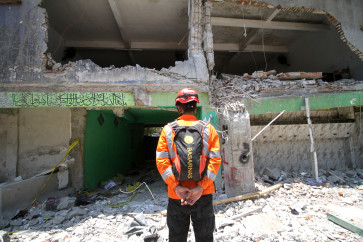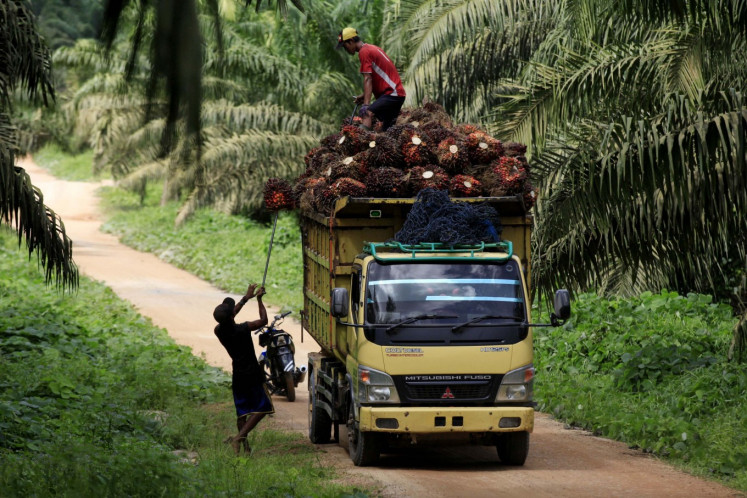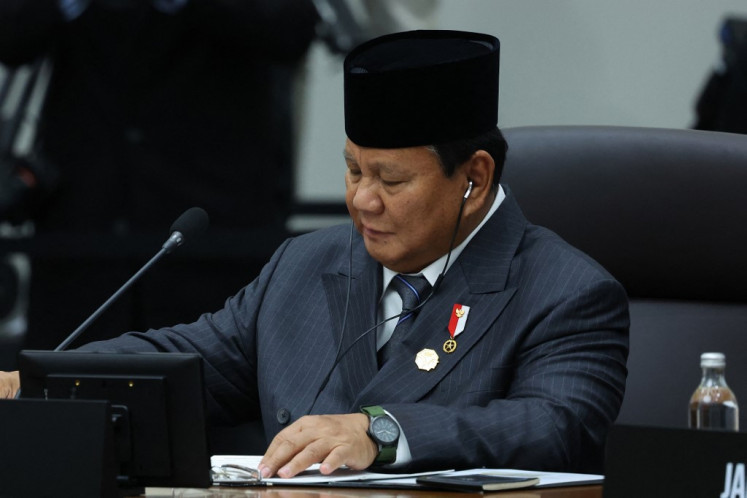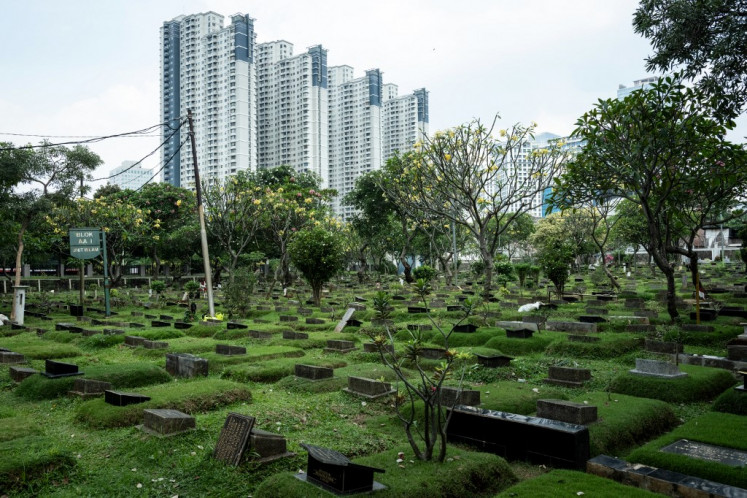Popular Reads
Top Results
Can't find what you're looking for?
View all search resultsPopular Reads
Top Results
Can't find what you're looking for?
View all search resultsOfficials admit poor disaster management in regions
Many of Indonesia’s regions remain unprepared for disasters and have no prevention or management strategy, despite the country’s high vulnerability to floods, landslides and earthquakes, officials say
Change text size
Gift Premium Articles
to Anyone
Many of Indonesia’s regions remain unprepared for disasters and have no prevention or management strategy, despite the country’s high vulnerability to floods, landslides and earthquakes, officials say.
“Disaster management requires urgent attention because Indonesia is the second most vulnerable country in the world in terms of disasters,” director of general governance at the Home Ministry Kausar A. Saleh told regional representatives at a seminar on regional disaster management in Jakarta on Wednesday.
In 2007, the central government gave provincial and regency authorities a one-year period to form regional disaster management agencies (BPBD).
However, out of the country’s 33 provinces, only six — West Java, Central Java, Bengkulu, West Sumatra, Southeast Sulawesi and North Sulawesi — have begun establishing such agencies.
The sluggishness of this process is dangerous given the country’s high susceptibility to disasters.
According to data from the National Disaster Management Agency (BNPB), as many as 343 disasters occurred in the country in 2008, the most frequent of which were floods, typhoons and landslides.
The disasters caused trillions of rupiah in losses and claimed the lives of more than 245 people, although this number was a large decreased from 888 the previous year and 814 in 2006.
The country has had several exceptionally deadly disasters, including the 2004 tsunami in Aceh, which caused over 126,000 deaths, and, most recently, the Situ Gintung dam burst in Tangerang, which killed almost 100 people.
Natural factors, such as the archipelago’s location along the Pacific ‘ring of fire’, as well as man-made factors, such as environmental destruction and unchecked development, have made the country a hotbed of disasters.
Efforts to prevent disasters have been sparse.
Areas that have not succeeded in establishing disaster management agencies currently rely on Coordination Boards for Disaster Mitigation (Satkorlak) to deal with the associated problems.
These boards however, react only after a disaster has occurred and do not provide necessary preventive measures in disaster-prone areas.
The BPBN agencies on the other hand must ensure preventive measures are taken, including ensuring that development projects will not increase a province’s likelihood of being affected by a disaster.
“After forming the agencies, the regional authorities must formulate disaster management policies and include disaster management funds in their budgets,” Kausar said.
He added that after a province establishes its own agency, its disaster mitigation board will be disbanded and its members will be transferred to the agency.
BNPB head Syamsul Ma’arif said that regional authorities should have the capacity to manage disasters, rather than rely on the central government for help.
“The regional authorities must be responsible for their own areas,” he said. “In the future, regencies and towns will also have their own disaster management agencies, if it is deemed necessary for them,” he added.
However, such agencies require considerable funding and human resources and most regional authorities have not allocated special funds for disaster prevention efforts, Syamsul added. (dis)










